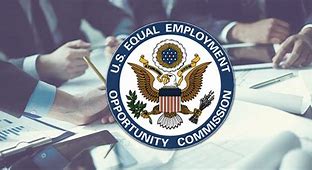Below is a review of the posts on Facebook and LinkedIn from the past week. You can check out the full posts by clicking on the links.
NOTE: many of the things in our posts may have changed immediately or soon after posting; there is continued instability and fluctuation (and, dare we say, chaos) with the changes in federal labor and employment-related agency heads and counsel, so check with us or another employment lawyer before taking any action based on something in our posts.

The post on Sunday 3/2/2025 told us that DOL notes restrictions on running FMLA, state and local leave concurrently. Know the law. The Jan. 14 opinion letter (NOTE this was before Inauguration 2025) hits on a compliance topic that is of routine concern to employers. So what did the DOL say? That employers may not require employees to use employer-provided paid leave during a portion of FMLA leave that is run concurrently with leave under a state or local paid FML program. But (of course) there is a caveat/exception – see the post.
Also, employers may not count state or local paid FML used for non-FMLA-qualifying purposes toward an employee’s FMLA leave entitlement. So what happens if state or local leave runs out before the employee exhausts their full FMLA entitlement? See the post.
You care about this because qualification standards and benefits under state or local FML laws may be more generous than under the federal FMLA. That might result in a limit on the extent to which employers run separate leaves concurrently and (as DOL noted in its opinion letter) the ability of employers to require employees to use employer-provided leave while taking FMLA-eligible leave.
How easy is it for workers to “top up” their state or local paid FML with accrued paid leave benefits from their employers? See the post. But some state paid FML programs allow employees to use accrued paid leave benefits as supplementation without the employer’s consent, so employers need to know the law of the state(s) in which they have workers.
TAKEAWAY: given the possible difference in coverage and benefits under local and state FML laws as compared to the FMLA, employers must know ALL laws that apply to their workers in ALL states in which they have workers. Get an employment lawyer involved early in the process.

The post on Monday 3/3/2025 was about when FMLA documentation backfires: a case study from a federal appellate court. Evey lawyer tells their clients to “document, document, document.” In the employment arena, if done on an even and timely basis, that can help ensure that an employer has strong evidence of its legitimate rationale for making employment decisions including if claims of discrimination or retaliation are brought by an employee. But there might be extremes as this recent case from the Tenth Circuit Court of Appeals shows.
In Walkingstick Dixon v. Oklahoma, the court overturned summary judgment for the employer on an employee’s claim of Title VII discrimination and retaliation. The court reasoned that while the employer had produced the legitimate, nondiscriminatory reason for termination by citing “poor job performance and…improper timekeeping,” the employee had raised a genuine dispute regarding whether that rationale was pretextual. The court then cited two sets of notes taken by the employer’s HR director three weeks apart. The notes seemed inconsistent and actually hurt the employer. Details about the content of the notes is in the post. Ultimately, the court held that “[a] reasonable juror could infer from these notes that [the employer] was grasping for reasons to fire [the plaintiff].”
So what can an employer learn from this to avoid having its own documents turned against it? Stick to the facts and don’t write notes about deliberations that may be misconstrued or misunderstood in the future. And do the other two things detailed in the post.
TAKEAWAY: It’s great – and advisable – to document the basis for an employment decision, but make sure the documents properly reflect that basis and are internally consistent. Work with an employment lawyer.

The post on Tuesday 3/4/2025 was HOA Q&A: Can owners recall any or all of the newly elected association board? The fact scenario is that an association has its annual meeting including the election of new directors. Members voted for five candidates for four director positions. After the annual meeting was concluded, an organizational meeting of the new and incumbent board members was held. The board appointed the losing candidate (i.e., the 5th nominee) as treasurer. A member thought that to be a blatant disregard of the votes cast by members and asked if any or all of the newly elected board could be recalled and other steps taken (as noted in the post).
The answer could be “it depends”. Because an association’s governing documents may have applicable provisions or applicable state law might require a certain response. In many states, the law does not require officers to also be directors but the governing documents usually do. So that’s the first step (as detailed in the post). As for recalling the Board, one must again look to the governing documents and applicable state law (if any). Most if not all states have provisions for removal of a director – see the post.
TAKEAWAY: Some issues in the condo or HOA arena require certain procedures or processes – get an experienced community association lawyer involved.

The post on Wednesday 3/5/2025 told us the EEOC lacks quorum, just spins its wheels. But when there is a quorum … On Monday, January 27, 2025, President Trump removed Equal Employment Opportunity Commission (“EEOC” or “Commission”) commissioners Charlotte A. Burrows and Jocelyn Samuels. That is the first time a president has removed an EEOC commissioner without cause prior to the expiration of their five-year term. Unfortunately, the removals leave the EEOC, a five-member Commission, with only two commissioners: Andrea R. Lucas, a Republican tapped by President Trump last week to serve as Acting Chair (see our posts of 2/24/2025 and 2/28/2025), and Kalpana Kotagal, a Democrat appointed by former President Biden, whose term is set to expire on July 1, 2027. The fifth seat has been vacant since July 1, 2024, when former Commissioner Keith Sonderling completed his five-year term. Without a quorum, the EEOC cannot act.
President Trump also fired EEOC General Counsel Karla Gilbride. Gilbride, who was nominated by former President Biden and confirmed by the Senate in October 2023, was slated to serve a four-year term set to expire in 2027.
But are these removals legal?
Title VII of the Civil Rights Act of 1964 created the EEOC, a bi-partisan, independent commission. Statutory specifics related to the commissioners’ nomination, confirmation, term length, and party affiliation are in the post. Most notably, Title VII does not include any grounds for removal of EEOC commissioners. And in the past, after a new administration has entered the White House, commissioners have served out the remainder of their five-year term. Background on Burrows (the former Chair under the Biden Administration) and Samuels (who interestingly was appointed by President Trump during his first term) is in the post. Whether Burrows or Samuels or both take legal action as a result of there removals is a question.
So what is the impact of removal of the 2 Commissioners?Had that not happened, Democrats would have maintained a majority on the Commission until the expiration of Samuels’ term in 2026. But now the Commission lacks a quorum (resulting in the things noted in the post). It is effectively at a standstill. And while Acting Chair Lucas has issued statements (see our posts of 2/24/2025 and 2/28/2025), she cannot act unless and until a quorum is established. That means she (or the EEOC) cannot issue any new guidance nor can she/it rescind any existing guidance. It is anticipated that President Trump will seek to appoint two commissioners to reach a Republican majority which can then vote to issue new rulemakings and revoke existing formal guidance. How long that will take, or whether it will involve litigation and stays by one or more courts, is anyone’s guess.
The Administration’s actions relative to the EEOC were not in a vacuum – similar action was taken as relates to the NLRB. See our post of 3/8/2025.
TAKEAWAY: We said it before, we will say it again – the federal labor and employment law landscape is chaotic now – and in many instances at a standstill. It is difficult for employers to know whether and which way to turn. Get continual advice from an employment lawyer.

In the post on Thursday 3/6/2025, we noted that the President signs Executive Orders impacting anti-discrimination, DEI and gender – what employers should know. On Jan. 21, 2025, President Trump signed several executive orders (EOs) that have significant impact on employers. (Whether they are legal is an entirely different matter.) The EOs set the current administration’s enforcement priorities and revoke EOs signed by previous presidents, some of which have been in effect for over 60 years. This has sown more chaos, uncertainty and legal questions, including how anti-discrimination requirements are to be enforced by the impacted agencies (especially given that the EEOC has no quorum!) or how the new requirements will be applied to existing contractual obligations of federal contractors. More issues are anticipated to emerge (probably daily). But for now let’s look at what the new EOs revoke, what is required at this point, what is prohibited, and what will hopefully to be clarified in the future (which might take years if litigation ensues – which is likely).
An EO titled “Ending Illegal Discrimination and Restoring Merit-Based Opportunity” (DEI EO) aims to change the landscape of diversity, equity and inclusion (DEI) rules that apply to business organizations nationwide, including federal contractors and private employers as well.
Executive Order 11246 of Sept. 24, 1965 (Equal Employment Opportunity) is revoked by the DEI EO. The supposed purpose as set forth in the DEI EO is set forth in the post. EO 11246, the Equal Employment Opportunity Act, was created because of the Civil Rights Act of 1964 and requires nondiscriminatory practices and affirmative action in the hiring process and employment of employers who are U.S. government contractors who do over $10,000 in government business a year. With EO 11246 now abolished, the DEI EO holds sway. It directs the Dept. of Labor to cease certain actions as listed in the post. The DEI EO allows federal contractors 90 days to operate under previous requirements. What should happen during that short timeframe is in the post. The DEI EO also directs the Attorney General to work with the heads of agencies and the Office of Management and Budget (OMB) to submit a report concerning private-sector discrimination, including those things listed in the post. Educational agencies and institutions that receive federal funding are involved (see the post).
What the DEI EO does NOT do is abolish Title VII or any other federal law (because it legally cannot do so). It does not eliminate the EEOC or change its processes but as noted in our post of 3/5/2025, the EEOC currently lacks a quorum (further, the EEOC’s staff and funding have been cut just like other federal agencies, so what it can actually get done is a question right now).
The DEI EO also revokes EO 12898 (Federal Actions to Address Environmental Justice in Minority Populations and Low-Income Populations), the focus of which is in the post. But the DEI EO does not contain any analysis of or specific requirements replacing EO 12898.
The DEI EO also revokes EO 13583 (Establishing a Coordinated Government-Wide Initiative to Promote Diversity and Inclusion in the Federal Workforce). This may have no direct impact on private employers, but it probably does for public entities that receive federal funding – see the post for details.
Other executive orders that were revoked by the DEI EO include Executive Order 13672 of July 21, 2014 (Further Amendments to Executive Order 11478, Equal Employment Opportunity in the Federal Government, and Executive Order 11246, Equal Employment Opportunity), and The Presidential Memorandum of October 5, 2016 (Promoting Diversity and Inclusion in the National Security Workforce) both of which were signed by President Obama for the purpose noted in the post.
The DEI EO is not all that the new president did in that fashion. He signed other executive orders on Jan. 21, 2025, that should be noted by employers, including the “Defending Women from Gender Ideology Extremism and Restoring Biological Truth to the Federal Government Executive Order” (Gender EO). What the Gener EO provides, and its requirements and policies, is all detailed in the post. The Gender EO does not provide concrete action items for adoption by private sector employers. But because of the significant shift it directs, there might be discrimination complaints related to an employer’s recognition of gender identity. We also don’t know how the EEOC will deal with any such claims (and won’t until it has a quorum and can act). But anticipated actions by the EEOC are noted in the post.
TAKEAWAY: Don’t take action related to existing workplace policies based on an EO signed by President Trump until you discuss it with an employment lawyer. The ground may have shifted again and you need to know the current legal landscape.

The post on Friday 3/7/2025 asked: What the cluck? Woman being fined $50 daily over backyard fowl goes to war with HOA. (Lest you think it is, this is not rare anymore). Let’s look at the facts.
Homeowner Lori Smith is being forced to pay a daily fine of $50 as long as her five (FIVE!) chickens stay in her New Jersey backyard. Smith insists that the HOA had previously allowed the chickens in her backyard. What she said is in the post. Also, Smith, who suffers from PTSD, said that after six weeks with the chickens, she noticed a positive change in her mental health. Her quote is in the post. But the HOA quickly ended her poultry dream. In 2022 it told Smith and Miller that the chickens and coop needed to be removed. The basis of the HOA’s action is in the post. Smith said she’s been fighting the HOA board for three years now. When they refused to remove the chickens, the HOA filed suit.
Last year, a judge ruled that the chickens had to be removed from the half-acre property. He also ordered a $50 per day penalty for not following his orders. How Smith characterized the judge’s ruling is in the post.
Smith and Miller still have the chickens on their property – they’ve just been paying the daily fee. They are trying to find a temporary home for the five chickens (described in the post for those who know the difference in breeds) until the suit is concluded. The latest ruling is that the couple must remove the chickens by April 4. What happens if that is not done is in the post. What Sith said about that is also in the post. The HOA did not respond to requests for comment through its website or its lawyer.
PS – there is a photo of the chicken coop embedded in the post
TAKEAWAY: Condo and homeowner associations can restrict pets, but ESAs are not pets. This type of scenario usually boils down to whether the animal is truly an ESA (and if so, whether the specific characteristics – size, breed, etc.) are required. Get a community association lawyer involved if ESA issues arise.

Finally, in the post yesterday 3/8/2025, we learned about the National Labor Relations Board memo on balancing EEO Employment and labor laws. While this provides good guidance, the GC has now been removed, so continued validity in question. But the memo is valid as of now, so let’s take a closer look.
Many employers have struggled with how to balance National Labor Relations Act (NLRA) considerations along with competing EEO laws given some rulings by the National Labor Relations Board (NLRB) in recent years – including those listed in the post. So on Jan. 16 (pre-inauguration), the NLRB’s then top lawyer, General Counsel Jennifer Abruzzo, issued a memo called Harmonization of the NLRA and EEO Laws. Her statement as to what she said the memo does is in the post. Most of the memo addresses employee conduct and comments made in the course of engaging in NLRA-protected activity (like the examples given in the post). The memo seems to recognize that there can be tensions between an employer’s obligations under EEO laws (such as Title VII) in prohibiting unlawful harassment and discrimination while at the same time allowing employees to use insults, obscenities, or other vulgar language in the course of otherwise protected conduct. An example of this is in the post.
The memo also sheds some light on the factors the NLRB will consider in determining whether an employee’s offensive conduct made in the course of protected conduct loses its protections under the NLRA. Those things include whether the employer has routinely and consistently disciplined employees for similar behavior in the past (which seems to weigh heavily for the NLRB) and the other things listed in the post.
TAKEAWAY: While the memo is not binding (and given Abruzzo’s removal is likely to be rescinded or revised), it gives employers some guidance to consider in these situations. But make sure to have a Plan B in place in case any action taken in reliance on the memo later becomes improper or incorrect. Again, keep an employment lawyer on speed dial.

 York, Pennsylvania 17403
York, Pennsylvania 17403